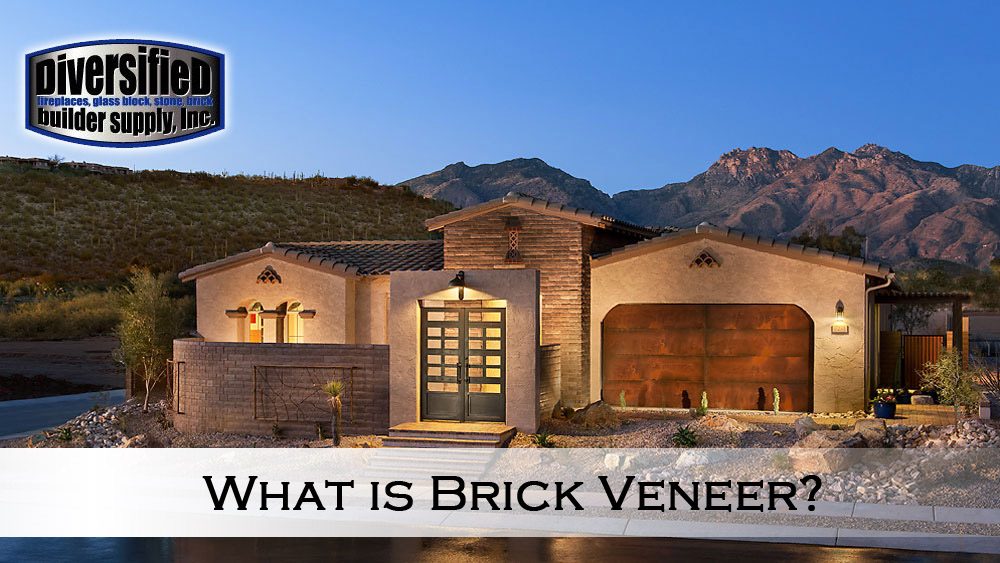For good reason, brick veneer is becoming more and more popular among homeowners. To achieve the timeless appearance of brick construction, brick veneer can be applied to an existing structure. Read on to learn more.
Everything you need to know about brick veneer—from installation to upkeep—will be covered in this guide to help you decide on your next home renovation project.
Comprehending Brick Veneer
A thin layer of brick that can be used as an external cladding system is called brick veneer. Brick veneer depends on the structural walls behind it for stability, in contrast to solid masonry walls that support a building’s structure.
Solid vs. Veneered Brick
The following are the main differences between solid brick and brick veneer:
1. Structure: Solid brick is a structural element, whereas brick veneer is an external finish that does not support weight.
2. Installation: While solid brick is constructed from the ground up, veneer is affixed to an already-existing wall structure.
3. Weight: Compared to solid brick construction, veneer is substantially lighter.
Additional insulation is provided by the air gap that brick veneer creates between the brick and the wall.
The Benefits of Brick Veneer
Brick veneer is a desirable alternative for homeowners due to its many advantages. With so many different material colors and sizes available, it’s simple to find a design that blends in with the style of your house. With lower labor and material costs, it’s also less expensive than solid brick construction.
Furthermore, brick veneer improves insulation. Energy efficiency is increased by the additional insulating effect of the air gap between the wall and the brick.
Brick Veneer’s Drawbacks
Although brick veneer has many benefits, novices may find installation difficult and time-consuming. Its poorer thermal conduction qualities in comparison to certain other cladding materials are another drawback. Additionally, brick veneer can eventually retain moisture inside the wall if proper drainage (weep holes) is not installed.
Brick Veneer Installation Locations
Brick veneer is adaptable and can be used both indoors and outdoors in a variety of settings. Common uses include garden walls and landscaping elements, fireplace surrounds, exterior facades for residential and commercial buildings, and accent walls in living rooms or bedrooms.
Brick Veneer Applications both Indoors and Outdoors
Depending on whether brick veneer is being used indoors or outdoors, there are differences in the installation procedure.
Installation Indoors
Bricks are usually placed on top of mortar that has been applied to the wall surface (usually cement board) for interior walls. Uniform gaps between the bricks are created with plastic spacers. Finally, after the mortar has dried, you fix or seal the bricks.
Installation Outside
It is more difficult to install brick veneer outdoors. To stop water intrusion, first apply Tyvek® HomeWrap® to the outside wall. After that, use mortar joints to apply the brick veneer to the cement backing and fasten the concrete board to the external wall. After that, construct from the ground up on a suitable foundation with sufficient ventilation and drainage.
Brick veneer installation outside is subject to stricter regulations. To ensure that the brick veneer can survive outdoor conditions, you must pay close attention to weatherproofing and structural integrity.
Typical Issues with Brick Veneer
Although brick veneer is a beautiful and long-lasting option, homeowners should be mindful of possible problems.
Issues with Installation
For brick veneer to last as long as possible and maintain its appearance, it must be installed correctly. Uneven brick placement, uneven mortar joint thickness, and incorrect anchoring to the structural wall are common installation problems.
Employing a professional contractor or skilled mason to install your brick veneer will help you avoid these issues.
Brick Joints That Are Weak
The quality of the joints in brick veneer greatly affects its integrity. There are thousands of joints in a typical installation, and each one could be a weak spot. For the application to be sufficiently strong, mortar joints need to be appropriately shaped and sealed.
The brick veneer will remain structurally sound over time if the joints are kept in good condition, so have it inspected every year and fixed as necessary.
Mortar Repointing
Repointing may be necessary as the mortar deteriorates over time. In order to do this, damaged mortar must be removed and replaced with fresh material. However, it can be difficult to match the color of existing mortar, so for best results, think about hiring an expert.
Brick Veneer Cleaning
To preserve brick veneer’s integrity and appearance, follow these cleaning and upkeep guidelines:
1. For routine cleaning, use a medium-bristle brush and mild detergent.
2. Steer clear of high pressure washing as it may harm the brick and mortar.
3. To stop stains and mold growth from spreading, clean them up as soon as possible.
4. To guarantee adequate drainage, regularly clear the weep holes.
5. Every year, check and maintain caulk joints.
6. Clear the veneer of any plant growth.
The Price of Brick Veneer
Brick veneer’s price varies according to a number of factors, such as the manufacturer, thickness, color, and design. According to Angi, the average price per square foot is between $5 and $12.
Installation fees, which range from $3 to $20 per square foot for labor, can greatly increase the total cost.
Hiring experts guarantees that the work is done correctly, preventing future repair costs because installation can be complicated. Choose the contractor that best fits your needs by discussing and pricing out your scope of work with several of them.
How Long Does Brick Veneer last?
High-quality brick veneer can endure for at least 50 years when installed and maintained properly, making it a durable exterior choice. Its lifespan can be increased with timely repairs and routine maintenance, but other elements like installation quality and climate also affect how long it lasts.
Conclusion
Homeowners can achieve the classic brick look without the structural complexity of solid masonry at a lower cost by using brick veneer. It is a desirable choice for many home renovation projects due to its adaptability for both indoor and outdoor applications.
Despite certain difficulties, like correct installation and moisture control, brick veneer frequently has more advantages than disadvantages. If you are thinking about using brick veneer, carefully consider the advantages and disadvantages and get expert advice.
PHOENIX BRICK VENEER
Diversified Builder Supply, Inc. is a premier supplier and installer of brick veneer. For more information about our full range of brick veneers we carry and install, please call us and request more information at 480-961-3780.






